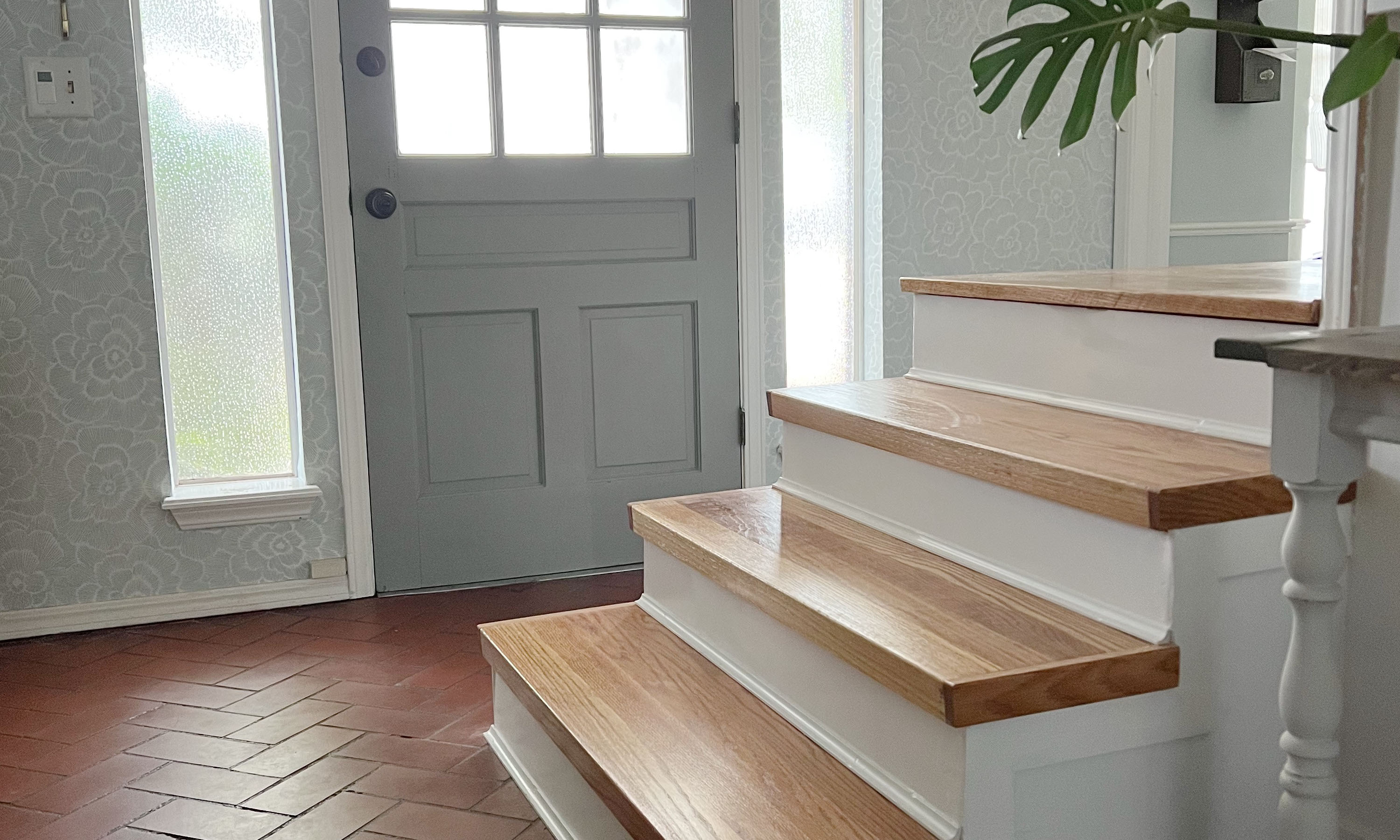
Kate Sandhu
Learning how to find a home builder who will carry out the work well and on time is essential to the success of your home renovation. Good builders don't come cheap, but they'll guide you through the entire process, from looking at the drawings and specification for your project, known as the ‘tender documents’ to giving you a detailed quote and construction programme and plan. Provided you then don't make any further changes, the builder should complete the project within the agreed time frame and stay on budget.
Use our guide to find the best builder for your project to make sure you pay a fair price for fair work, whether you're extending or remodeling your entire home.
What is the builder’s role?
Building contractors are professional project managers and business owners, ranging from one-man operations to small to medium enterprises. They understand the construction process and the building industry, and how to keep a project on schedule by co-ordinating labour and materials, plant, tools, equipment, and taking into account other elements, such as bad weather. They have a legal duty to comply with building regulations and owe you a duty of care.
Depending on the firm’s size, they may have permanent employees, an administrative team, a quantity surveyor to price work, and a contracts administrator in charge of purchasing. Everyone wants their project completed quickly, cheaply and to a high standard, but you can only ever really achieve two of the three. A larger business may be more efficient due to staff levels but more costly, due to their overheads. A smaller operation may take longer to complete your project, but may be more competitive on price.
How much does a builder cost?
A contractor will calculate how much a renovation or extension project is going to cost in labour and materials, plus specialist trades such as electrics and plumbing, which are typically subcontracted, as well as preliminaries (site set-up costs, welfare facilities, scaffold, permits and permissions). They will add a charge for their own management time, plus an element of profit, typically between 15 and 20 per cent of the total cost.
In addition, the cost of a builder can fluctuate due to economic reasons, if materials are limited due to supply, then the cost of these will increase, elevating your overall project cost.

How do I find a good local builder?
To get three or four quotes for your project, you’ll need to contact around a dozen firms. Common ways of finding a builder include:
- Personal recommendation;
- Recommendation from a professional adviser; (architect, structural engineer);
- Internet enquiries and local forums;
- Industry trade bodies and guilds;
- Social media (asking for recommendations on building groups or from accounts carrying out renovations);
- Local advertising;
- Looking for boards at other sites.
Recommendation is the best way to find a reliable builder. Most small firms rely on their reputation and work hard to maintain it. Be aware that a good builder is likely to be very busy and require a lot of notice. Be suspicious of a builder who can start tomorrow. Good builders that are high in demand will usually have a backlog of work that they have committed to, so although it can feel frustrating to wait, don’t be tempted to go for someone just because they are available as having to wait for a builder to have a free spot is a positive sign that they have a consistent flow of work.
Another good way to find a builder is by approaching builders undertaking work in your area. If there is an advertising sign with a phone number or web address next to the building site, this is promising, because, at the very least, it means that the builder is communicative and open to new work. Even better, before you contact the builder direct, approach the current client in order to ask what they think of the work so far, you may even be able to look around the site to get a feel for the building work. This may seem invasive, but most individuals are more than happy to show off their home and the build. If they are happy with the builder will want to shout about it and if they have qualms, they will want you to know.
Some builders may also post ads in a local newspaper: do pay some attention to these as well as looking online, as you could come across a local gem who isn't online yet.
You can also check social media and look for local building accounts or renovation accounts (either via popular building hashtags or searching for renovations with your local geographical name or postcode) that are undertaking a renovation in your area. This will allow you to ask individuals for feedback and cost comparisons. You’ll also be able to follow the journey more closely, to get a better idea of how the build is going.
Regardless of which route you go down to find your builder, you should never skip a face-to-face conversation. as meeting in person will help you get a better feel for them as an individual. Aim to visit one or two current or recently completed clients also as chasing references will give you confidence that they have successfully completed other work.
What to ask potential builders
Step 1 – Background research
You can save time before you even meet by asking for the following:
- Address and contact details;
- The type of work they’ve done previously;
- References from previous clients/suppliers;
- Membership of any trade associations
- Company information
In addition, look online using Companies House to investigate their company background; have they got a registered business (all reputable builders should have a registered company) and have they had other businesses that they have dissolved? If they have dissolved a number of companies then this can be a red flag that they are folding businesses in order to take clients’ money (this is because the client can’t recover finances from a business that is dissolved).
Step 2 – Arrange to meet
Make sure that they:
- Understand what the job involves;
- Have undertaken similar work before; if they haven’t, at least have an experienced team around them who you have met;
- Seem confident about the work required;
- Can get along well with you;
- Are available when you need them to start.
Step 3 – Ask for an estimate
The more information you supply, the more accurate the quote, so make sure you provide:
- A set of plans and construction drawings, including structural calculations to allow builders to calculate materials needed;
- A full specification for all materials, finishes, fixtures and fittings;
- A copy of any contract you intend to use or a request to review their contract;
- Details of how you want the quote set out, including any allowances for provisional sums (items that can’t be accurately priced without investigation, such as groundworks) and prime cost sums (for any items not yet chosen).
This will make it easier to try and compare quotes on a like-for-like basis for those you get back. Typically, you will get pushback for asking for so much detail, but this is because it takes time and effort to pull together. Don’t be dissuaded, insist on getting this breakdown; you don’t want to start a renovation without real clarity around what is included vs what isn’t as you could be stung for additional work you had assumed you had paid for, increasing house renovation costs in the process.
Step 4 – Check references
Ask the builder’s previous clients:
- What were they like to work with?
- Did they undertake the work to a satisfactory standard?
- Were any problems overcome?
- Was the project completed on time and on budget and, if not, whose fault was it?
- Were they neat, tidy and reasonably quiet?
- Would they use them again?
Ideally, go to see previous work and see the client face to face. In addition, contact the contractor’s all risks insurer and make sure they have sufficient cover in place.
Finding the right tradesperson for your project needn’t be daunting, and with proper research and time spent checking a trader’s reputation, you can be confident in your choice. Start by searching for companies on websites such as TrustMark, Checkatrade, Rated People and Trusted Traders, Which? or accreditation bodies for a specific trade type, such as fmb.org.uk for builders. Simply use your postcode and make a shortlist of those that meet your criteria.
Are trade associations important?
Many contractors are members of a trade body or guild and it is possible to get contacts through these organisations. Membership gives a contractor a degree of credibility, as it usually requires credit and quality control checks. Some, such as the Federation of Master Builders, offer insurance-backed guarantees, standard contracts and a dispute arbitration process. The main organisations are:
- Federation of Master Builders (FMB): FMB is the largest building industry trade body, representing over 13,000 vetted small- and medium-sized builders. There is a code of conduct and it operates a service that will match its members to your needs.
- TrustMark: This Government initiative is designed to help the public find reliable contractors and tradespeople. It has a vetting procedure and awards the TrustMark to those that comply with Government-endorsed standards. Search for local members.
- National Federation of Builders (NFB): The NFB represents around 2,000 small- and medium-sized contractors and has a code of conduct and arbitration procedure. You can search online by location and specialism.
- Scottish Building: An umbrella organisation for 19 independent trade bodies with a range of specialisms, Scottish Building runs an online service to help match homeowners with local contractors.
- The Guild of Master Craftsmen (GMC): The GMC is a trade association that represents a number of different trades. Members are asked to observe a code of conduct and the guild offers a dispute resolution service. Search for a variety of local craftspeople.
Be aware though that even though these organisations offer protection and arbitration, it isn’t always a quick fix. For example, if a builder is registered with the FMB then you need to be willing to accept the original contractor back to complete the work; what this could mean in practice is that if your renovation is half complete and you are going to arbitration because of a conflict with your builder, you have to pause work and live with a half-finished house for the duration of the mediation, before knowing whether or not the case will fall in your favour and the builder will be asked to complete the work.

What is the best website to find a builder?
Find-a-builder websites attempt to match your needs to local trades, charging a fee to the builder on their listing, lead, or work that proceeds to contract. Some websites check qualifications, insurance and customer recommendations; others give leads to anyone willing to pay for your details. Services include Checkatrade.com, Mybuilder.com and Ratedpeople.com.
Can I avoid paying VAT?
If you are planning to take advantage of VAT concessions on your renovation work, such as the reduced rate for dwellings empty for two years or more, it is essential that your contractor is VAT-registered.
Most renovation work attracts VAT at the standard rate of 20 per cent; however, if any subcontractors you use are not VAT-registered, they must not charge it on their labour, which can save you money. Make sure that the subcontractors are aware that the work they are doing is eligible for a concession so that the appropriate rate is charged.
If you are building a new home, converting a property into a home, building a property for charity, or building a non-profit communal residence then you can apply for a VAT refund on building materials and services. This is known as the ‘DIY housebuilders’ scheme’. There are certain criteria that must be met which you can find on the government website.
Is the cheapest quote ever the best?
Try to get at least three different quotes for your project. Once you have analysed them and chosen one or two that look realistic, you can try to negotiate on areas where one has charged more than the others.
It is always wise to be cautious of quotes that appear too good to be true – they usually are. If a single quote is much lower, it’s likely to either have omissions, or the contractor may be planning to make up the difference once they have secured the contract, by exploiting loopholes in the specification and tender documents, or by overcharging for later variations to the contract. If you do have a quote that is much lower and you decide to opt for that builder, it is even more critical that you undertake all of the checks we mention in this article such as a contract and meeting prior clients; it would be wise to check with previous clients if they had similarly low quotes too in order to provide some reassurance that they aren’t low-balling the quote and planning on walking off site mid-way through the build with some of your hard-earned cash!
Do I need a contract?
It is very important to have a written contract in place and a copy should have formed part of your tender documents, so that the builder is aware of the terms and conditions on which they are basing their quote.
If you’re working with an architect or other type of project manager, who will help find and appoint the builder and then administer the contract, they will probably want to use one of the standard contracts published by the Joint Contracts Tribunal (JCT). A guide is available at Jctltd.co.uk to help you choose the right one. Some larger main contracting firms and specialists, such as loft conversion companies, may have their own standard contracts. If you are appointing and managing the builder directly, you’ll need a different form of standard contract. The FMB produces a free contract, which can be adapted to individual projects. Another standard contract is available at Contract-pack.com, to download for £14.99. If your project is in Scotland, make sure you use a contract that is appropriate for Scottish law.
It's important to remember that if you haven’t got a contract then you will also not be covered by at least some of the trade associations mentioned above.
What about prime cost contracts?
An alternative way to work with a contractor is on what is known as a ‘cost plus’ or ‘open book’ basis, whereby the contractor charges for labour, materials and plant at cost and then adds an agreed mark-up, usually 15-20 per cent, for managing the project.
This is a transparent way of working but does rely on trust: in particular you must trust the contractor and his team to work efficiently, not to drag the job out and inflate labour costs, and to only charge for materials used on site.
How do I compare quotes?
This can be difficult because:
- Contractors may vary their mark-up according to how busy they are;
- They may make allowances for provisional and prime cost sums in different ways;
- Labour rates may vary according to the size of the business (e.g. VAT or black economy);
- Overheads will be higher for larger firms;
- Some contractors pare down their price and later exploit loopholes to charge for ‘extra overs’ that inflate the final price;
- Contractors may use quantity surveyors who will rely on standard measured rates (average labour and material prices), while others will base price on instinct or an average cost per square metre;
- They may interpret the plans, specification and quantities differently;
- The contractor may include exclusions or other special conditions;
- They may handle ‘extras’ for variations to the contract (you changing your mind) in different ways;
- Some contractors may work together to create a bias in the process if they are all recommended by the same architect, or work with the same quantity surveyor;
- They may or may not include an insurance-backed guarantee in their quote.
It is therefore tricky to compare quotes on a like-for-like basis, making it more critical to ensure you provide the same information to all so that they quote for the same work and ensure that you receive a detailed, line by line breakdown of costs that clearly outlines what is included, and what isn’t.
What to do if you’ve fallen victim to a rogue trader
‘The first thing you should do if you suspect your hired tradesperson isn’t meeting the agreed terms, that their work isn’t of a high enough standard, or if they fail to show up on site, is to try and speak with the professional to put the problem right,’ says Simon Ayers of Trustmark. ‘The problem may simply boil down to miscommunication, so keeping the conversation going is key to ensuring any queries or concerns are aired.’
However, if you’ve tried this and failed, the next step is to get help from a third party, such as a regulatory body, Trading Standards or the Consumer Ombudsman. If you sourced the tradesperson through a regulatory body, or if they are part of such an organisation, they should have a system in place to deal with disputes and offer you support in handling the situation, or offer to liaise with the company on your behalf through an Alternative Dispute Resolution process.
The best results often come from projects where a clear brief has been drawn up prior to work commencing, as each party knows who is responsible for what, and any discrepancies can be seen as a breach of agreement. ‘It is vital that both the trader and the homeowner uphold their part of the agreed contract, including regular payments and staged inspections to ensure work is done to the appropriate quality,’ Simon Ayers explains. ‘A contract is legally binding and without it, it’s simply one person’s word against the other, leaving you in a potentially vulnerable position.’ Unfortunately, if no contract was drawn up, you may find it difficult to come to a solution, risking financial losses and personal distress.
Tim Roe from Rated People agrees: ‘If you‘ve managed your project properly with a good, clear and agreed brief and contract, which, in its simplest form can even be an email exchange, you will be covered.’ Remember to deal with proceedings in a professional manner, too, as remaining factual and unemotional when things go wrong is crucial to reaching a quick solution. ‘It’s easy for tempers to soar when money and the results of a home transformation are at risk, but this could hinder the resolution process,’ says Roe.
Be proactive and address issues early, escalating problems to the relevant body as soon as possible after you’ve attempted to communicate with the tradesperson first with no luck. Verdicts by regulatory organisations, Trading Standards or the Consumer Ombudsman can be binding, so once the verdict has been ruled, the case will be closed, unless you take it to court as a final resort, which can be costly.
Read more:
- How to plan and cost a single storey extension
- Planning, designing and costing a two storey extension
- How to plan and design a kitchen extension
Join our newsletter
Get small space home decor ideas, celeb inspiration, DIY tips and more, straight to your inbox!
Michael is Director of Content & Product Development for Future Homes. Prior to this he was Editor in Chief of Real Homes magazine, Period Living and Homebuilding & Renovating and he also served as Editor of Homebuiling & Renovating for several years. As well as being an expert in renovation, having presented multiple property TV shows and authoring Renovating for Profit (Ebury, 2008), Michael has a personal and professional interest in self build and helps others achieve their dreams of building a unique home. He is also Deputy Chair of NaCSBA and has campaigned for the self-build sector for many years, regularly sitting with government parties to advise on the industry.
- Kate SandhuReal Homes Blogger
-
 My first apartment makeover: 5 renovation mistakes I learned the hard way, and how you can avoid them
My first apartment makeover: 5 renovation mistakes I learned the hard way, and how you can avoid themThese are 5 things to avoid in your apartment makeover. Trust me, I learned these the hard way during my first renovation project
By Luisa Rossi
-
 Share your small space glow up to win $150 in the Real Homes competition
Share your small space glow up to win $150 in the Real Homes competitionShow off your creativity and DIY skills to win $150 and for the chance to be featured exclusively in Real Homes magazine
By Camille Dubuis-Welch
-
 My DIY range hood and backsplash build gave my kitchen the perfect farmhouse finish
My DIY range hood and backsplash build gave my kitchen the perfect farmhouse finishI craved charm in my kitchen space and adding a custom range hood and shelving was the best move.
By Brooke Waite
-
 How to convert carpeted stairs to wood treads: a 5-step DIY
How to convert carpeted stairs to wood treads: a 5-step DIYConvert old worn-out carpeted stairs to wood treads DIY for a beautiful finish that will last for years to come. Plus, this stair riser project will cost a fraction of the price to pay a pro!
By Dori Turner
-
 AC not working? Here are 8 things to check ASAP according to industry experts
AC not working? Here are 8 things to check ASAP according to industry expertsYour AC may not be working because the filter is clogged or you've got a tripped circuit breaker. Whatever the issue, getting to the root of the problem will lead to quicker solutions
By Camille Dubuis-Welch
-
 3 DIYs you should NOT do in a heatwave
3 DIYs you should NOT do in a heatwaveYou shouldn't clean windows on a hot day, you just shouldn't
By Camille Dubuis-Welch
-
 HGTV home renovator shares the most essential home repair you can do
HGTV home renovator shares the most essential home repair you can doHGTV's hottest renovator Carmine Sabatella debunks why this basic home maintenance job should not be forgotten
By Camille Dubuis-Welch
-
 15 telltale signs you're dealing with a cowboy builder and how to avoid them
15 telltale signs you're dealing with a cowboy builder and how to avoid themA cowboy builder is easy to spot, when you know the telltale signs. Here's how to avoid one so you don't end up out of pocket with a poor or even unfinished home reno job
By Lucy Searle